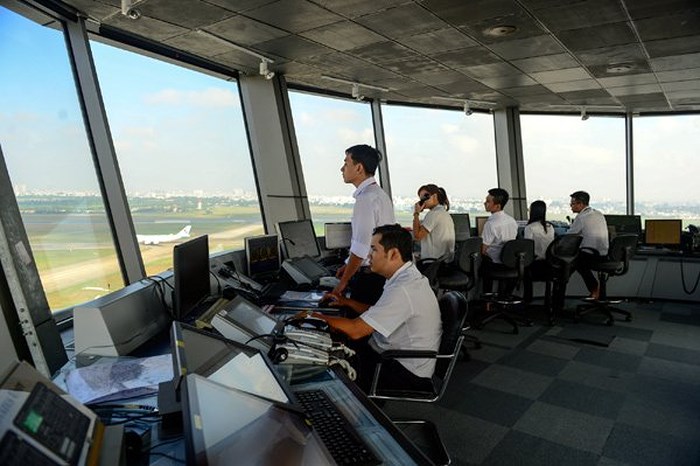General Plan for Ensuring Flight Operations in Vietnam until 2030, with an orientation towards 2050
What are the detailed regulations on the General Plan for Ensuring Flight Operations in Vietnam until 2030, with an orientation towards 2050? - Hong Anh (HCMC)

General Plan for Ensuring Flight Operations in Vietnam until 2030, with an orientation towards 2050 (Internet image)
On May 14, 2024, the Director of the Civil Aviation Authority of Vietnam issued Decision 1072/QD-CHK on the General Plan for Ensuring Flight Operations in Vietnam until 2030, with an orientation towards 2050
General Plan for Ensuring Flight Operations in Vietnam until 2030 and with orientation towards 2050
General Plan for ensuring flight operations in Vietnam until 2030 and orientation towards 2050 includes the following orientations and solutions:
(1) Orientation towards ensuring flight operations until 2050
The direction towards ensuring flight operations in Vietnam until 2050 focuses on establishing a modern, sustainable, and internationally integrated air traffic management system. The major development directions include:
- Advanced infrastructure and technology:
Continuing to develop infrastructure and technology in a modern direction and adopting new technologies to improve the efficiency of the air traffic management system and enhance safety.
- Aviation Security and Safety:
Enhancing security measures, monitoring, and risk prevention through new technologies. Prioritizing investment in safety and security systems to prevent external interference in the air traffic management system.
- Sustainable development:
Applying green technology solutions to minimize the environmental impact of aviation activities, including the use of biofuels and measures to reduce CO2 emissions. The development of intelligent control systems helps optimize energy consumption and minimize noise pollution.
- Integration of Civil and Military Aviation:
Continuing to strengthen and develop the cooperation model between civil and military aviation to ensure efficient use of airspace and infrastructure, while maintaining the security of the air traffic management system.
- Training and development of human resources:
Enhancing training and skills development for air traffic management personnel to meet the increasing demands for specialization and modern management in the context of globalization.
- Global Connectivity and International Cooperation:
Promoting international cooperation in the field of flight operations to benefit from sharing experiences, technologies, and resources, aiming to become a major aviation center in the region and internationally.
(2) Groups of solutions for implementation of the Plan
- Solution group 1: Upgrading and developing infrastructure
+ Researching and investing in modern infrastructure at airports to optimize capacity and operational efficiency.
+ Implementing new air routes and access methods in accordance with international standards, focusing on completing all PBN content.
+ Improving equipment and technology at airports to support non-radar control and flight operations.
- Solution group 2: Enhancing Aviation Security and Safety
+ Strengthening security measures at airports and in non-radar management.
+ Applying advanced surveillance technologies such as ADS-B and accurate access monitoring systems.
+ Implementing training and certification programs to enhance the skills and capabilities of aviation personnel.
- Solution group 3: Sustainable Development and Green Technology
+ Researching and applying solutions to minimize environmental impact.
+ Developing research projects on new technologies to reduce emissions and improve energy efficiency.
- Solution group 4: Civil-Military Cooperation and Integration
+ Building mechanisms for cooperation between civil aviation agencies and the military to share airspace and aviation infrastructure.
+ Implementing plans and policies to optimize the use of non-radar airspace and improve operational efficiency.
- Solution group 5: Efficient Management and Operation
+ Implementing automatic non-radar management systems (ATM) and data-driven control tools to improve non-radar flow and operational performance.
+ Upgrading monitoring and control systems to ensure safety and efficiency in operations.
- Solution group 6: International Cooperation and Network Development
+ Enhancing international cooperation through conferences and agreements to share knowledge, technology, and resources.
+ Developing expert exchange programs and cooperation in training to benefit from international experience and expertise.
More details can be found in Decision 1072/QD-CHK, issued on May 14, 2024.
- Key word:
- Flight Operations
- Vietnam
- Number of deputy directors of departments in Vietnam in accordance with Decree 45/2025/ND-CP
- Cases ineligible for pardon in Vietnam in 2025
- Decree 50/2025 amending Decree 151/2017 on the management of public assets in Vietnam
- Circular 07/2025 amending Circular 02/2022 on the Law on Environmental Protection in Vietnam
- Adjustment to the organizational structure of the Ministry of Health of Vietnam: Certain agencies are no longer listed in the organizational structure
- Vietnam aims to welcome 22-23 million international tourists in Vietnam in 2025
-

- Number of deputy directors of departments in Vietnam ...
- 15:04, 05/03/2025
-

- Cases ineligible for pardon in Vietnam in 2025
- 14:43, 05/03/2025
-

- Decree 50/2025 amending Decree 151/2017 on the ...
- 12:00, 05/03/2025
-

- Circular 07/2025 amending Circular 02/2022 on ...
- 11:30, 05/03/2025
-

- Adjustment to the organizational structure of ...
- 10:34, 05/03/2025
-

- Notable new policies of Vietnam effective as of ...
- 16:26, 11/04/2025
-
.Medium.png)
- Notable documents of Vietnam in the previous week ...
- 16:21, 11/04/2025
-
.Medium.png)
- Notable documents of Vietnam in the previous week ...
- 16:11, 02/04/2025
-
.Medium.png)
- Notable new policies of Vietnam to be effective ...
- 16:04, 02/04/2025
-
.Medium.png)
- Notable new policies of Vietnam effective from ...
- 14:51, 21/03/2025

 Article table of contents
Article table of contents
